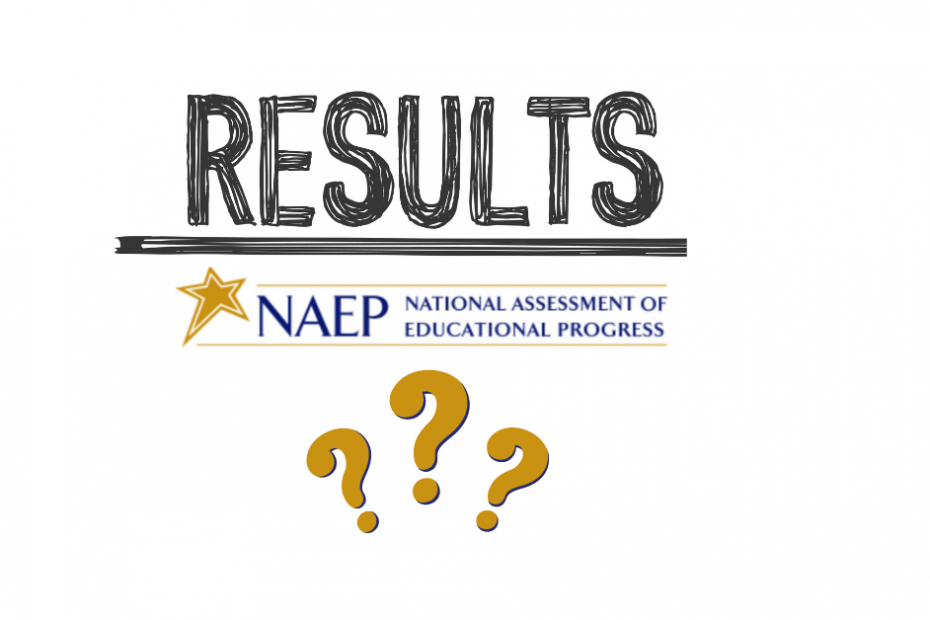Parents, teachers, and experts widely agree that the COVID-19 pandemic negatively impacted student learning. But exactly how much did student achievement decline?
You may have seen or heard some of the news coverage of the 2022 National Assessment of Education Progress (NAEP) results, which were released on September 1 and October 24. T The NAEP scores show the greatest decline in average reading scores in three decades and the first recorded decrease in math scores. In 2022, the overall reading achievement for fourth-grade students decreased by an average of five points and 37 percent scored below the “NAEP Basic” level. The fourth and eighth-grade results that compared 2019 to 2022 were similar.
Over the last few months, countless news stories and articles have discussed the troubling NAEP findings and other test scores that have been released with their implications for the 2022-2023 school year. If you didn’t have time to read everything (and how could you! don’t worry, I’ve got your back) here are five things you need to know:
- Scores for struggling students declined more than for higher-performing students.
At the start of every new school year, teachers must assess their students’ proficiency levels and attempt to bring as many students as possible up to grade level. This will likely be an even greater challenge this year, as the NAEP data shows students who are the furthest behind in reading and math (10th and 25th percentiles) had the greatest decline in scores. These students will need access to high-quality, targeted interventions to address their skill deficits. But schools and districts must act quickly; research suggests that it takes four times longer for students to improve their reading skills in fourth grade compared to the same skills when taught in late kindergarten (Hall, 2009).
- On average, reading and math scores for students with disabilities decreased more than their peers.
There was great concern throughout the pandemic about how students with disabilities would access individualized instruction, assistive technology, and any other support they received during in-person instruction. The NAEP report shows larger dips in math and reading scores for students with disabilities compared to their peers without a disability classification. However, this achievement gap existed before the pandemic and it may be too soon to determine the long-term effects of the pandemic on students with disabilities.
- Higher-performing students on the NAEP were more likely to have better access to key resources during remote learning.
It may be unsurprising that students with reliable internet access, a quiet learning environment, and instructional support performed better on the NAEP. Yet it is disheartening to see how many students (regardless of their performance) lacked access to these basic resources during virtual learning.
- Higher and lower-performing students differed in their level of confidence with remote learning.
Another interesting finding was in response to questions about how well students would be able to self-assess their learning if they continued to receive reading and math instruction virtually. Among higher-performing students in reading, 67 percent said they “probably or definitely can recognize when they don’t understand something they are learning remotely,” compared to 32 percent of lower-performing students. The responses were similar for mathematics (66% and 33%, respectively). Lower-performing students were also less likely to ask for help when needed and were less confident in their ability to find supplemental resources during virtual learning.
- Triangulating this report with others makes the need for phonics instruction clear. The fourth-grade outcomes mirror third-grade end-of-year phonics scores. The NAEP report shows 37% of fourth graders below basic in reading, while the State of Student Learning 2022 report showed 37% of third graders two grades below grade level in phonics. This alignment of results is not a coincidence and schools can start improving student phonics skills now.
So how should educators respond to the NAEP results? One positive step would be to address phonics gaps at all elementary grade levels. While the NAEP does not break down results by specific reading areas, other reports have found that more K-2 students were below-grade level in phonics in Spring 2022 compared to pre-pandemic years (Curriculum Associates, 2022). These gaps in foundational reading skills need to be addressed for students to be successful in grade 4 and beyond, where they will increasingly be expected to read and understand multi-syllable words. Teachers across all grade levels can also take steps to ensure they are providing students with grade-level work, which accelerates learning if given consistently and with appropriate support (TNTP, 2022).
Keep an eye out for the NAEP report that will be released in spring 2023, which will include LTT results for age 13 students as well as a comparison of results for age 9 students going back to the first administration in the early 1970s.
